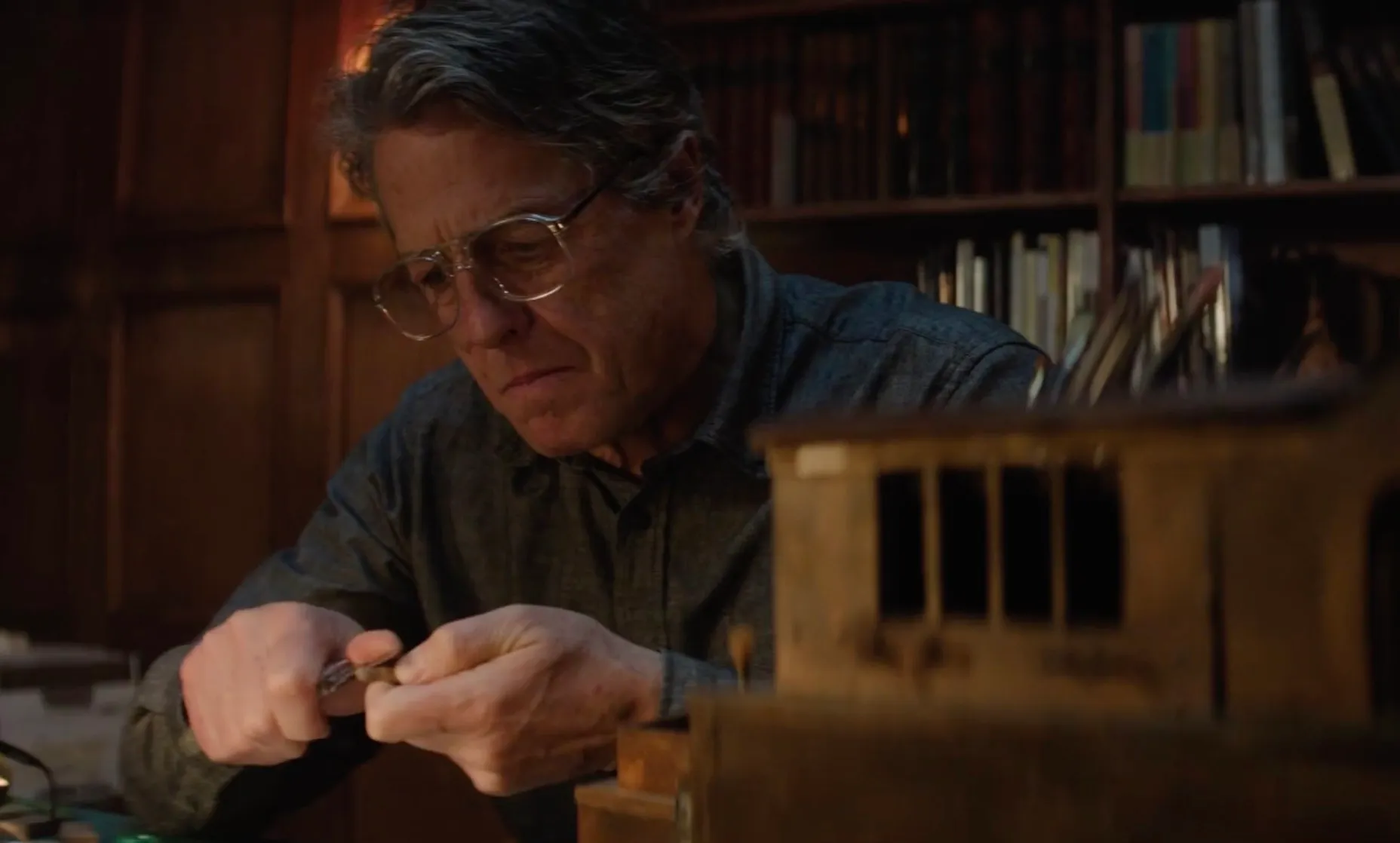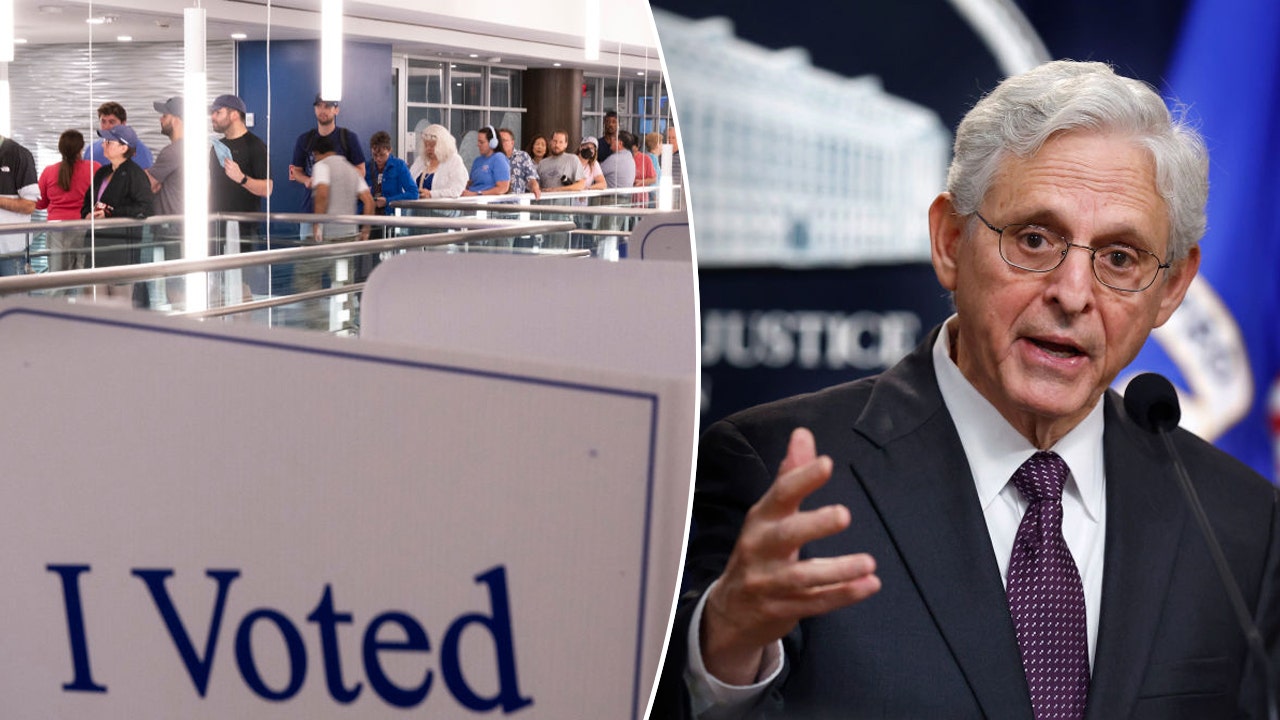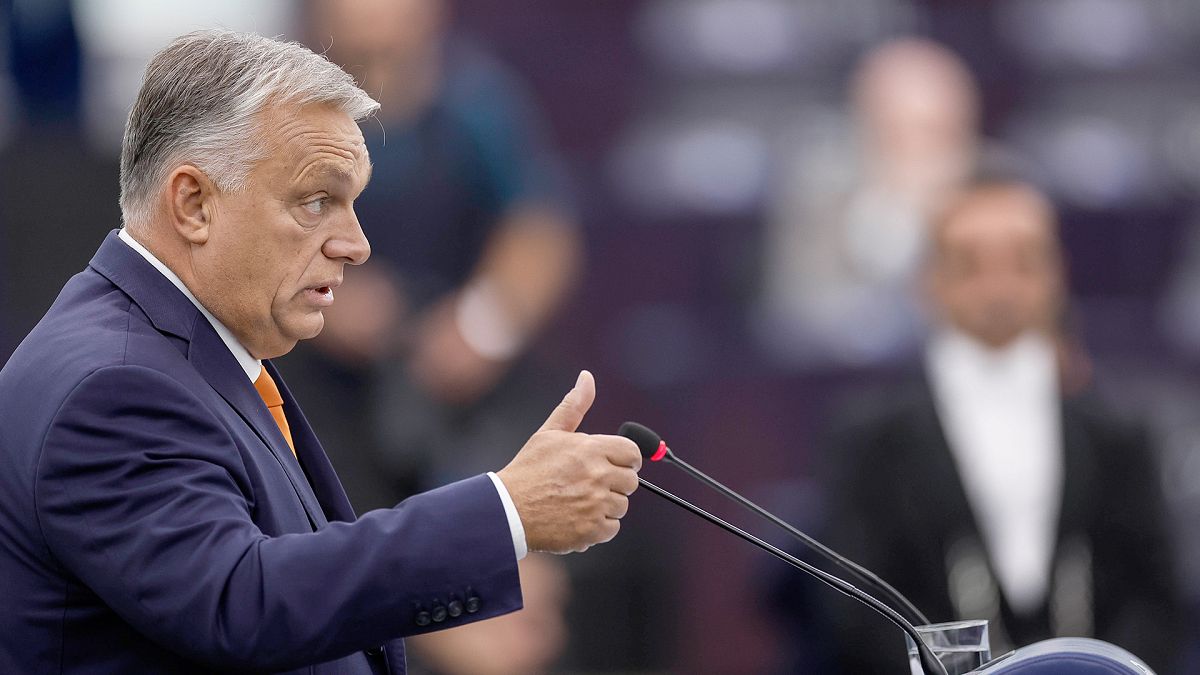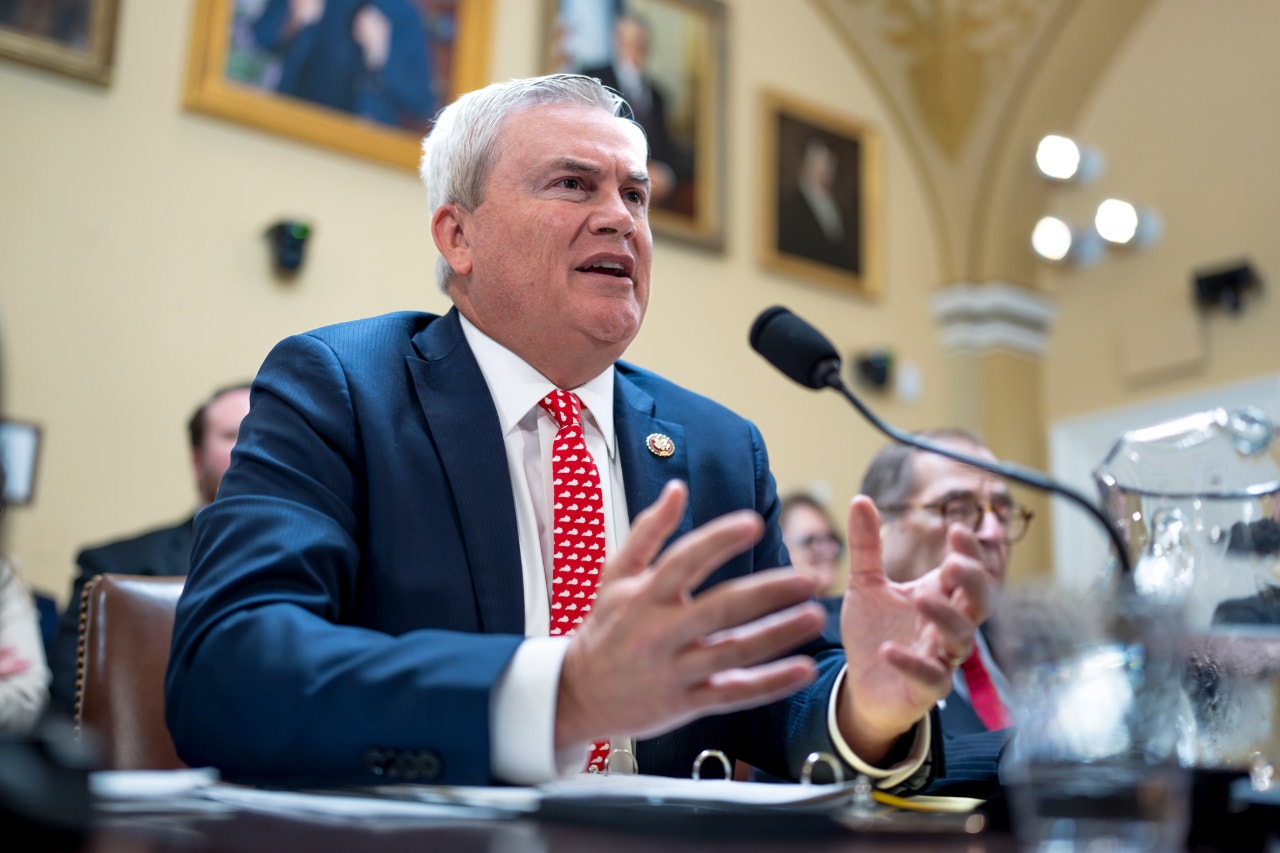Lifestyle
'Magical Overthinking' author says information overload can stoke irrational thoughts

Amanda Montell hosts the podcast Sounds Like a Cult. She’s also the author of Cultish: The Language of Fanaticism.
Kaitlyn Mikayla/Simon & Schuster
hide caption
toggle caption
Kaitlyn Mikayla/Simon & Schuster

Amanda Montell hosts the podcast Sounds Like a Cult. She’s also the author of Cultish: The Language of Fanaticism.
Kaitlyn Mikayla/Simon & Schuster
How is it that we are living in the information age — and yet life seems to make less sense than ever? That’s the question author and podcast host Amanda Montell set out to answer in her new book, The Age of Magical Overthinking.
Montell says that our brains are overloaded with a constant stream of information that stokes our innate tendency to believe conspiracy theories and mysticism.
“We grow up hearing certain legends and myths and lore repeated ad nauseum, and we perceive them as true,” she says. “It’s the reason why … I genuinely thought, until I was an adult, that it took seven years to digest gum.” (Despite what you may have heard, bubble gum typically digests the same way as food.)
Montell, who co-hosts the podcast Sounds Like A Cult, says this cognitive bias is what allows misinformation and disinformation to spread so easily, particularly online. It also helps explain our tendency to make assumptions about celebrities we admire.

“We see a pop star whose music we enjoy, and we assume that they must also be worldly, kind, nurturing,” Montell says. “Or we enjoy someone’s fashion sense and we jump to the conclusion that they’re gregarious or maybe they speak other languages — we jump to these conclusions for which there is little or no evidence.”
Montell says that in an age of overwhelming access to information, it’s important to step away from electronic devices. “We are meant for a physical world. That’s what our brains are wired for,” she says. “These devices are addictive, but I find that my nervous system really thanks me when I’m able to do that.”
Interview highlights
On why humans developed cognitive biases


Cognitive biases are these deep rooted mental magic tricks that we play on ourselves. … Cognitive biases developed to help us reconcile our limited time, our limited memory storage, our limited cognitive resources, and our distinct craving for events to feel meaningful during a time when most of the problems that we were contending with every single day were physical. They were less abstract, less complex, less disembodied. And that was true for most of human history. So we developed these shortcuts unconsciously to help us make sense of our environment enough to survive. But now survival is, for the most part, taken care of. At least we’re not being attacked by saber tooth tigers anymore in the way that we were when these biases developed. And yet we’re still relying on them to confront much more complex and cerebral concerns, and that clash is causing a great deal of existential pain. I really think that our innate mysticisms are clashing with this onslaught of information, mass loneliness and almost a capitalistic pressure to know everything under the sun. And this is all happening without our conscious awareness.
On the “halo effect,” in which we jump to conclusions that celebrities are perfect
Once, when [human beings] were living in smaller communities, the halo effect prompted us to make decisions, like seeing someone with large muscles or intact teeth and thinking, “Oh, that person must be a skilled hunter or a skilled fighter, because they’ve avoided disfigurement from battle. That would be a great person to align myself with for survival.” But we’re now mapping this halo effect onto modern para-social relationships involving celebrities, and that’s setting everyone up for psychological failure, because we’re uplifting these celebrities onto a pedestal so high up in the sky that we can’t perceive their humanity anymore. … So when they post something or behave in a way that contradicts the expectations that we’ve cultivated of them, we feel the need to dethrone them, to punish them.
On “thought terminating clichés” and the notion of manifestation
It describes a sort of stock expression that’s easily memorized, easily repeated, and aimed at shutting down independent thinking or questioning. … So a new age thought terminating cliché might sound like something like, “Well, that’s just a victim mindset.” Or “you need to sit with that.” Or “don’t let yourself be ruled by fear.” …
[Manifestation] is its own kind of conspiracy theory, which is an edgy point to make. … We tend to believe naturally, as humans, that big events or even big feelings must have had a big cause. It just makes proportional sense to us. … Where manifestation starts to get a little sketchy, a little grift, a little culty dare I say, is when public figures on TikTok, on Instagram projected the language of capitalism onto it. When you start to take an absolutist approach to this subject matter and make it an ideology, it gets a little sinister. Because then when you start to think about it more surgically, if the fact that you are now gainfully employed and have a romantic partner whereas before that was not the case, is because you manifested it, you created a vision board, you bathed your crystals, you know your mind was in the right place.
Well, the inverse of that is that if you’re sick, poor, unemployed, unlucky in love, well then it must be your fault. And in the post-pandemic era, during this time of incredible tumult, socio-politically, globally, we’re craving someone to tell us how to reclaim some agency. And so I have noticed a generation of grifting manifestation gurus on TikTok and Instagram sweep into the market and promise, “Actually, I have a bespoke proprietary manifestation technique, and if you’re seeing this on your free you page, then it was meant for you. All you have to do is sign up for my $30 a month course, and I will impart this manifestation wisdom onto you. It will change your life. And if it doesn’t, well, that’s your fault.”
On the power of nostalgia
During times of present pain, we tend to sort of bathe in a warm bath of positive past memories as a coping mechanism. Excess nostalgia is a bad thing. It’s what’s causing everyone from Disney adults to MAGA zealots to go blackout drunk on nostalgia and have these complete delusions of the past. That can be really dangerous. But as I continued talking to nostalgia scholars, I realized that what’s called personal nostalgia, or when we romanticize memories from our own life, that’s a really positive thing because it helps us generate hope for the future. It’s engaging us in imagination. The future is unpredictable. We don’t have any artifacts from [the future]. … We do have relics from the past, and that helps us. We cling to those things in order to imagine a future that could feel that good. At the same time, we’re experiencing a glut of this cognitive bias called declinism, which is our proclivity to think that life is just getting irreversibly worse and worse and worse. And it’s all downhill from there. And again, that’s something that we do naturally.
Sam Briger and Thea Chaloner produced and edited this interview for broadcast. Bridget Bentz, Molly Seavy-Nesper and Meghan Sullivan adapted it for the web.

Lifestyle
It's not just D.C.: Satirical Trump statues are appearing in cities across the U.S.

Pedestrians look at a statue of Donald Trump behind Gerhard Marcks’ sculpture Maja, in Maja Park in Philidelphia.
Caroline Gutman/The Washington Post via Getty Images
hide caption
toggle caption
Caroline Gutman/The Washington Post via Getty Images
Divisive statues mocking former President Donald Trump aren’t just sprouting up in Washington, D.C.: Similar structures have spread to other cities in recent days.
Last week, two bronze-colored statues caused a stir when they abruptly appeared in the nation’s capital.
First, a replica of former House Speaker Nancy Peloi’s desk, defaced with a pile of poop, was plopped within view of the U.S. Capitol. Its plaque explains that it honors the “brave men and women who broke into the United States Capitol on January 6, 2021 to loot, urinate and defecate throughout those hallowed halls in order to overturn an election.”
Then, over the weekend, a plaza near the White House suddenly became host to a tall sculpture of a hand gripping a tiki torch, reminiscent of the torches that white supremacists held at the deadly 2017 Unite the Right rally. Its plaque dedicates it to “Trump and the ‘very fine people’ he boldly stood to defend when they marched in Charlottesville, Virginia.”

As it turns out, two other satirical statues briefly popped up in Philadelphia and Portland, Ore., around the same time.
Both feature a life-sized model of a suit-clad Trump, were placed near an existing statue of a woman and are titled In Honor of a Lifetime of Sexual Assault. It shows him with a closed-mouth smile and one hand curled in what could be interpreted as a suggestive gesture.
The plaques also quote from the infamous 2005 Access Hollywood tape, in which a hot mic captured him telling then-host Billy Bush about kissing women and grabbing them between their legs without permission, in crude terms.
“[W]hen you’re a star, they let you do it. You can do anything,” Trump said in the clip, which surfaced a month before the 2016 election. It earned him much criticism but didn’t keep him out of the White House.
Dozens of women have publicly accused Trump of sexual misconduct dating back as far as the 1970s, which he has denied.

Former Sports Illustrated model Stacey Williams became the latest to accuse Trump of inappropriate sexual behavior last week, alleging he groped her in 1993 while Jeffrey Epstein, who was later convicted of sex offenses, looked on. Another, writer E. Jean Carroll, sued Trump twice for defamation after he denied sexually abusing her in a Manhattan department store dressing room in 1996 — for which a jury found him liable in 2023.
The Trump statue appeared on a Portland sidewalk on Sunday, an arm’s length away from a sculpture of a nude woman that has been there since 1975.
That sculpture, Kvinneakt (“nude woman” in Norwegian), has its own storied history: It was featured in the “Expose Yourself to Art” poster in the 1970s, which showed future Portland Mayor Bud Clark flashing the woman in a raincoat.
Decades later, the figure of Trump towering over the woman, with the two statues’ bases touching, made for a strikingly similar image. But it didn’t last long.

The Trump statue was beheaded by mid-afternoon, according to KOIN, and passersby dismantled it piece by piece throughout the day until “all that was left was one golden shoe.”
At least one of the culprits was Portland City Council candidate and self-described “fearless Trump supporter” Brandon Farley.
Farley tweeted a video of himself arriving at the scene of the already-headless statue and chipping away at what he described as the “slanderous plaque,” eventually tearing it off completely.
The second Trump statue was similarly short-lived.
It arrived in Philadelphia’s Maja Park on Wednesday, according to BillyPenn at WHYY. It was placed about 15 feet behind, and facing, Maja, a statue of a nude woman with her eyes closed and arms above her head.

The Maja was sculpted by German artist Gerhard Marcks in the 1940s, and installed in the park in 2021.
City workers took the Trump statue down and put it into a pickup truck before noon, the Philadelphia Inquirer reported.
It’s not clear if the same artist or artists are behind all four installations. But the style of the bronze sculptures and the tone and font of their accompanying plaques look nearly identical.
The D.C. sculptures are intended to “express the principles of democracy justice and freedom,” a group called Civic Crafted LLC wrote in its request to display them in D.C. The National Park Service granted them a permit to display the torch until Thursday, and the desk until next Wednesday — the day after Election Day.
Lifestyle
Opinion: Happy Halloween? Living with unease, uncertainty and the uncanny in a scary season
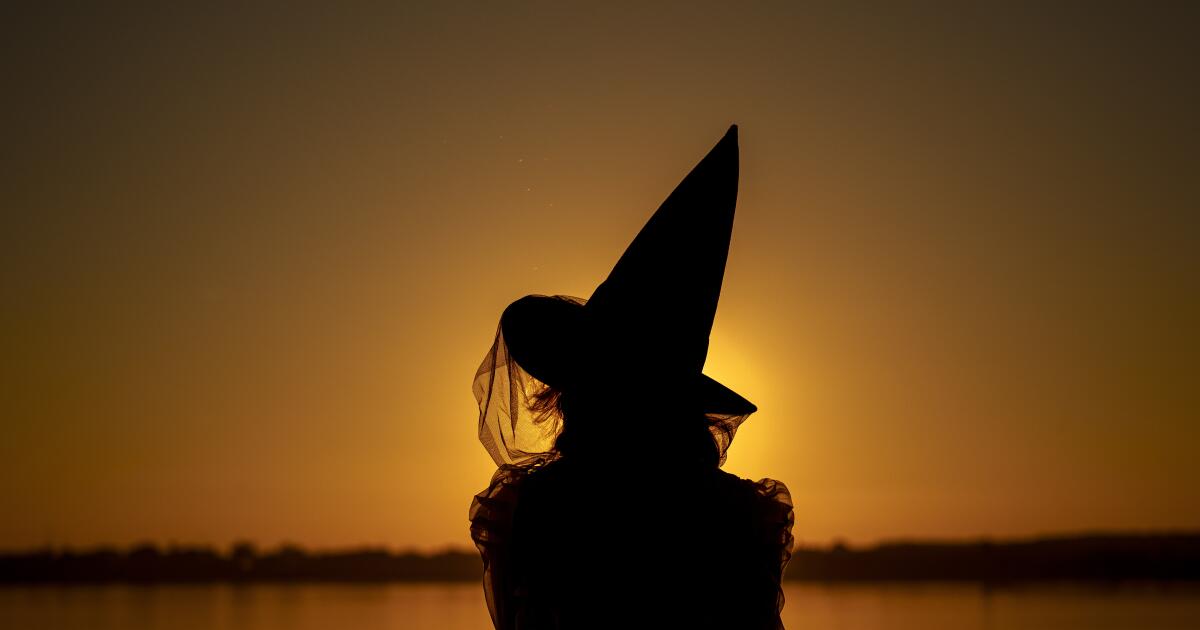
One of the best parts of new parenthood is figuring out what your child is going to be for Halloween. Considering the costume possibilities for my 15-month-old, I have been surprised and often delighted by what one can find on the internet. For a reasonable price, you can dress your baby up as Cher Horowitz, Doc Brown, Lord Farquaad, Mary Poppins or a Rydell High cheerleader while you yourself take on the persona of Austin Powers, Forrest Gump, Harry Potter or Wonder Woman. The holiday seems nostalgic and innocent, even unifying in its appeal to the one thing we all share: that we were children once.
That is, of course, until I walk outside, where I am reminded of my lifelong discomfort with the more lurid aspects of Halloween. All around me are homes festooned with terrifying man-made skeletons, goblins, clowns and witches. “How can anyone stand this?” I keep asking myself.
As it turns out, Halloween has always been rooted in dueling ideas of the otherworldly. Set aside in the 9th century as a day to honor the Catholic saints, it succeeded an even older Gaelic celebration of transition between seasons and states of being. Our modern holiday might be thought of as a portmanteau of All Hallows’ Eve — the Christian feast that precedes All Saints’ (or Hallows’) Day — and Samhain, an ancient Celtic holiday marking the final harvest of the year and the beginning of winter.
As Katherine May writes in her book “Wintering,” Samhain (pronounced sah-win) represents a seasonal and spiritual threshold at which the veil between this world and the next is at its thinnest, inviting loved ones we have lost to visit us. Between fall’s radiant foliage and the year’s first snow, it’s “a time between two worlds, between two phases of the year,” and “a way of marking that ambiguous moment when you didn’t know who you were about to become, or what the future would hold.”
Today we have lost much of this reverence for Halloween, yet the holiday continues to thrive. Oblivious to its original purpose, our modern version is an expression of the American idea that you can be whoever you want to be as well as a vehicle for our tensions and anxieties, turning death into a joke with temporary disguises and decorative one-upmanship.
Maybe the detached skulls and bloody hands on our lawns are part of an endeavor to harness or reclaim our fears. Or maybe the fantastical monsters of our imaginations have become easier to face than the human monsters running for our public offices — a process that culminates every few years, as it happens, just days after Halloween.
In the run-up to the 2018 midterm elections, Elizabeth Bruenig wrote for the Washington Post that Halloween “gets its depth and intrigue from the layering of things that seem frightening but are really benign — toothy jack-o’-lanterns, ghoulish costumes, tales of ghosts and witches and monsters — atop things that seem benign but are really frightening, such as the passage of the harvest season into the long, cold dark.”
Yet what if we should really be frightened not so much of the “long, cold dark” as our unwillingness to confront it? Americans sometimes seem unable to face the real darkness of the world, much less embrace what can be gained from it: compassion for others’ suffering; acceptance of the seasonality of life; separation from the capitalist hustle; and a greater sense of gratitude, belonging and purpose.
The passage of time, grief for those we have lost, longing for a better world that seems perpetually out of reach — all of these things can be frightening. But they don’t have to be.
As election day looms just beyond this ancient celebration, it’s time to put the “hallow” back in Halloween. Amid the bare branches, flickering candles and migrating birds lies an invitation to reflect not only on the children we once were but also on the adults we aspire to become — and to dwell, for a moment, in the seasonal and spiritual in-between.
Cornelia Powers is a writer who is working on a book about the golfer Bessie Anthony, her great-great-grandmother.
Lifestyle
Keri Russell returns as 'The Diplomat,' which is just as savvy in Season 2

Keri Russell and Rufus Sewell as Kate and Hal Wyler.
Netflix/
hide caption
toggle caption
Netflix/
At a time when it seems political rhetoric couldn’t get more bitter or outrageous, it’s easy to see the world’s leaders and the people who support them in the worst possible light.
But Netflix’s The Diplomat offers a different vision of politics: one where sharp staffers are often the backseat drivers in government, and many of those involved are truly interested in improving lives – even when they do awful things along the way.
That’s the universe Netflix’s series thrives in, where The Americans alum Keri Russell plays a hard-nosed, practical mid-level diplomat suddenly elevated to serve as ambassador to Britain, amid plans to groom her to become America’s next vice president.
Starting season two with a bang
As the show’s second season kicks off, Russell’s Ambassador Kate Wyler is dealing with the aftermath of a cliffhanger that ended the first season. Her husband — former ambassador Hal Wyler — along with her deputy, Stuart Hayford and another aide were caught in the blast of a car bomb while trying to meet with an official from the British government.
The official may have had information about who really initiated a deadly attack against a British aircraft carrier from the first season. But instead of learning more, Kate’s husband and two members of her staff were caught in another attack.
While British and American officials scamper to figure out exactly what happened, we see The Diplomat ride a delicious, compelling line between serving up hefty slices of political drama and revealing the mournful humanity of co-workers trying to recover from a massively traumatic event.

Every performance here is golden. Rory Kinnear is particularly excellent as an egotistical blowhard of a British Prime minister, Nicol Trowbridge. Ali Ahn, currently earning raves for her performance as a witch on Disney+’s Agatha All Along, shines here as CIA station chief Eidra Park – trying to offer savvy, effective support to Kate while not-so-secretly fretting about Kate’s deputy Stuart, with whom she had a relationship.
Rufus Sewell is magnetic as Kate’s husband Hal; she suspects he sees her ascension to vice president as his best route back to power, but he insists otherwise, testing their relationship. David Gyasi plays U.K. foreign secretary Austin Dennison as a precise-yet-passionate power player, focused on doing the right thing for Britain, even as he grows closer to Kate and her marriage frays.

Allison Janney as Vice President Grace Penn.
Alex Bailey/Netflix
hide caption
toggle caption
Alex Bailey/Netflix
But it’s not until West Wing alum Allison Janney arrives as current Vice President Grace Penn that we see the show’s drama really come alive. As a brilliant vice president who may be forced to step down because of a financial scandal involving her husband, Penn excels at maneuvering others into doing what she wants while leaving them convinced it was all their idea.


Some may have been concerned that Janney is playing a souped-up version of her West Wing character, White House staffer C.J. Cregg. But ultimately, they don’t have much in common beyond a habit of speaking directly and a predilection for pantsuits.
A show centered on smart women leading
What both of Janney’s characters do have in common, however, is that they are accomplished, effective women – making a difference in environments where their talents and achievements are often underestimated or overlooked.
Indeed, several storylines in The Diplomat revolve around smart women deftly guiding powerful men into making better decisions than they could manage on their own. These men aren’t complete idiots, but also are not as smart as they believe – especially Trowbridge, a vociferous bully who leans heavily on several sharp-thinking women, including his wife.
In a particularly pointed exchange, as Hal notes all the humiliating reasons why Penn should accept her fate and resign without damaging the president’s agenda, Kate responds with a telling line. “What do you think my husband would do if it was him?” she says to Penn. “Would he quit?”
The answer – that Hal naturally assumes the benefits he brings would outweigh any political cost – neatly outlines the specter of sexism which hangs over The Diplomat. In a world free from that particular “ism,” you get the sense these women would actually occupy the seats of power, instead of acting as backseat drivers for the men who do.
Complicated plots that pay off
Compelling as all of this is, the plot gets even more complicated in the second season, as Kate and her team begin to sort what really happened in both the warship attack and the car bomb. New viewers trying to jump into the series now could be thoroughly confused — best to make sure you know the events of the first season before joining in for the second.
But once acclimated, you can sit back and enjoy a story set in a political universe where expertise is valued, competition plays out like a protracted, 3D chess game and several staffers caught in the middle truly believe in the possibility of using their offices to make life better for everyone.
Who knew a visceral, fast-paced series about a global political conspiracy could also – thanks to the terrible state of our real-world political clashes – feel like something of a fantasy?
-

 Movie Reviews1 week ago
Movie Reviews1 week agoAlien Country (2024) – Movie Review
-
/cdn.vox-cdn.com/uploads/chorus_asset/file/25431700/STK201_SAM_ALTMAN_CVIRGINIA_A.jpg)
/cdn.vox-cdn.com/uploads/chorus_asset/file/25431700/STK201_SAM_ALTMAN_CVIRGINIA_A.jpg) Technology7 days ago
Technology7 days agoOpenAI plans to release its next big AI model by December
-

 Health6 days ago
Health6 days agoNew cervical cancer treatment approach could reduce risk of death by 40%, trial results show
-

 Culture7 days ago
Culture7 days agoTop 45 MLB free agents for 2024-25 with contract predictions, team fits: Will Soto get $600M+?
-

 Sports5 days ago
Sports5 days agoFreddie Freeman's walk-off grand slam gives Dodgers Game 1 World Series win vs. Yankees
-
News5 days ago
Sikh separatist, targeted once for assassination, says India still trying to kill him
-

 Culture5 days ago
Culture5 days agoFreddie Freeman wallops his way into World Series history with walk-off slam that’ll float forever
-

 Technology4 days ago
Technology4 days agoWhen a Facebook friend request turns into a hacker’s trap


